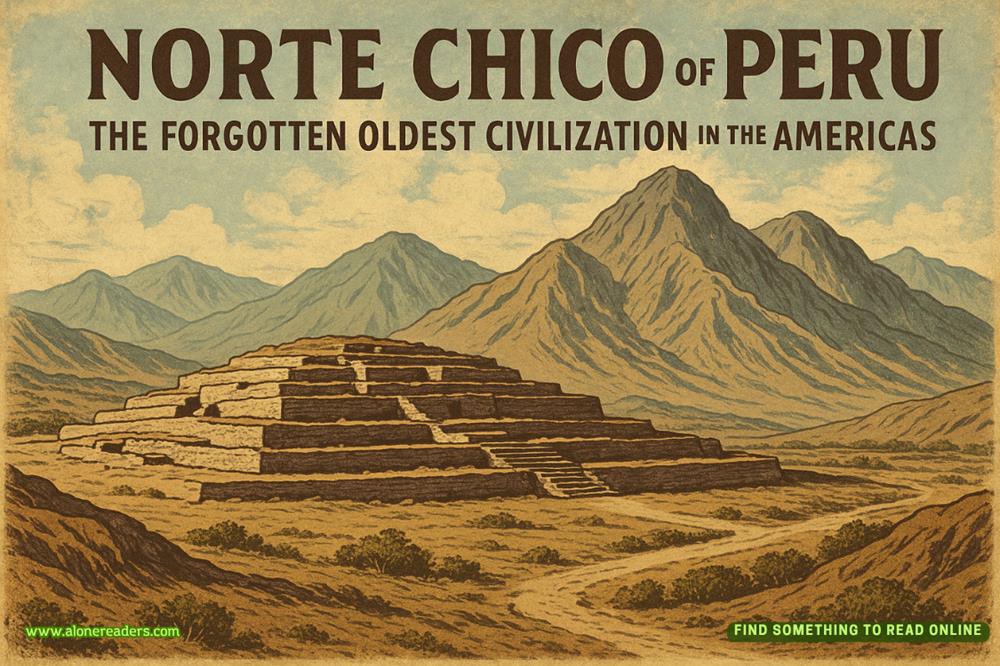Page 50 of The Melancholy of Mechagirl
In front of the house they share is a shrine. It is full of objects. Photographs, metal animal figurines, incense, burned and whole, stone chopsticks, a small helmet. She will think of wunderkammers, wonder cabinets from Europe full of mysterious things that tell a tale. There is no one to tell this tale to her, no museum card or legend. The objects simply exist, in the shrine. But she will, for just a moment, feel good and safe and ready, because she knows, though her husband does not, that the statue of the little gray man wearing a red hat and scarf is Jizo, patron of children and travelers, who took on the task of instructing all the beings of the six worlds. Who in some stories was once incarnated as a figure called Sacred Girl. He is also the guardian of miscarried and aborted children. He carries a wish-fulfilling jewel to light the darkness and see through to the truth of things. The young woman is a traveler, and if not a sacred girl at least aspiring, and she had a miscarriage only a few years back. She feels Jizo might look after her—though she also knows he is the ferryman across the Sanzu River that circles hell. Everything has a dual nature. Even at twenty-three, she knows that.
In her second year, she will know how to use her washing machine and her heater. She will know what a cicada is. She will crave raw cuttlefish and yakiniku. She will stop waiting for her husband to get home and instead go to Kyoto by herself. To Kama-kura, Yokohama, Tokyo. She will fall in love with the Shinkansen. The retriever puppy she will buy to keep her company will grow into a dog. She will be able to use the trains without standing in the middle of the station for minutes at a time, staring at the signs. Sometimes she will not even look up at all. Her feet will know the way. She will have met the man who will become her second husband online, though she will not even suspect that he—a friend who sends her a warming mat for her feet in the winter—will marry her one autumn years hence. She will understand the categories of garbage and what days they should be brought to the refuse station. She will know how to close the storm shutters around her house without help. She will see her first novel published. She will shed some of her parents’ ideas of femininity that she absorbed without thinking: she will start lifting weights, learn to kill spiders herself without crying and calling for the husband that isn’t there, learn to fix the vacuum cleaner, learn not to show every single thing on her face. She will walk up to Tsukayama Park, which rises above her house at the top of terraced, wooded paths, nearly every day. She will see the cherry blossoms bloom and think that yes, somehow, they are different here, even if it is only the weight of so many stories bowing the branches a little.
And the young woman will not be so afraid of being alone. But being alone will have become the new normal. She had always been talkative, gregarious, occasionally obnoxiously loud. But she will have become quiet. Turned inward. She will have caught introversion like a virus. She will not need sex anymore. She will put everything into the book she is writing, a book that will one day be called In the Night Garden. Sometimes she will feel so lonely and lost and broken that she won’t be able to get out of bed except to feed the dog. The dog will keep her alive. In the Night Garden, boiled down to its most essential parts, is about a lonely, lost, and broken girl telling stories to keep herself living. But she won’t understand that for years.
She will keep the shrine in front of the house clean. She will tend to Jizo as best she can. She will not even be able to imagine a life outside Japan, though she is a stranger here and will always be. She will go to Hase-Dera shrine and break down sobbing in the face of Kwannon. She will go to Fushimi Inari and laugh on top of the mountain and these will be the two genuine religious experiences of her life—though it will be a religion she is not a part of, and a pair of experiences she has no right to. It does not belong to her and she does not belong to it. But she cries and laughs all the same.
Japan trains the young woman to be a writer of fantasy and science fiction. It is not because Japan is especially science fictional, as her friends back home fervently believe, nor is it that she now stands out in a crowd as one who does not belong. It is the peculiar combination of the degree of difference—so much greater than between America and England or Italy or Russia—and the stubbornly romantic and vaguely idiotic innocence of a girl who thought reading the tales of Momotaro and Ama-Terasu and the rabbit who lives on the moon would prepare her for living in a military town in contemporary Japan. Everything looks like a fantasy novel when you don’t understand it. Her path through these two years is a journey from the fantastic to the realistic. From ball gown, jail bars, running dog to bus route number 7 to Yoshikura-Chuo. Ten years later, writing a story for a collection of Japanese fiction, this young woman will write: For foreigners, Japan is a Rorschach painting. It isn’t a good thing, but it’s a true thing. Everything looks like magic when you don’t understand it. She will spend a long time learning to see ink instead of long, lean dogs running blackly across a white page.
It is not a very thrilling reveal to say no
w, at the end of all these paragraphs, that this young woman we have traveled to see is me. I moved to Japan in 2003, just after the war in Iraq began, as the wife of a Naval officer who shipped out immediately to serve in that conflict. I lived in Yokosuka for twenty-five months, mostly, though not always, alone.
I have spoken often about my time in Japan. I am asked about it in interviews with frequency. I usually say: “It was a profound experience for me.” And that’s true. But I use the word profound to bear the weight of a multitude of meanings. It was profound: in a sense, there is the Catherynne that went to Japan and the Catherynne that came home from Japan and they are not the same person at all. I had been on one path—married young, ensconced in academia, writing, but only in my spare time. I fell off of that path, out of a marriage, out of the personality I’d once had. When I came back to America I had to put together a new person out of the loneliness that had become the whole of me. I’d catch myself paralyzed in a crowd, not knowing whether to speak Japanese or English. I had grown new and exciting social anxieties. I felt all the time like my voice was too loud. My time in Japan is the part of my history from which my first books came, two of which, Yume No Hon: The Book of Dreams and The Grass-Cutting Sword, directly engaged with Japanese culture, and one, In the Night Garden, the book that would go on to make my name, contained much that branched and flowed from my experience there. It’s also where I reset, like a video game, and became someone else—and I am still that someone else, for better or for worse.
All this preamble is to say: Look at these stories. Look at this decade of writing around those two years, circling closer and closer to saying something true about them, like Zeno’s Paradox. If you listen to the engine of my fiction, you can always hear the part that is Japan firing. If you know what you’re listening for.
Japan is everywhere in my work. Even in stories that seem to veer elsewhere, it is present. It is the warm future Hokkaido of Silently and Very Fast. It is the hidden history of Sylvie in “Fade to White.” It is the paralyzed player of games in “Killswitch.” It is Izanami and Izanagi struggling to speak first in “Thirteen Ways of Looking at Space/Time.” Most of my novels touch Japan’s borders in one way or another as well, from one of the protagonists of
Palimpsest to the kitsune-pirate in In the Night Garden to the Tsukomogami in The Girl Who Circumnavigated Fairyland in a Ship of Her Own Making. Part of me has never left. I do not expect that this collection represents the end of my writing about Japan. I do not think there is an end. Some things you never stop writing about. Love affairs, deaths, children, missed chances, sicknesses, places you never expected to find, or to find you. Countries of the heart. And yet, as true as that feels to me to write, I cringe a little, for what Western author who ever rubbed elbows with a Tokyo train has not professed a love for Japan, if only for the noodles at Narita? Is my love different, special? Well, one always likes to think so, and one is rarely correct.
It is my experience that Westerners—and I am one, I am not exempt—look at Japan through thick, thick glasses of expectation. Some of that expectation is shaped by the export of Japanese culture, some of it through imperialist dogma, some of it through economic interest and fear, some of it just plain exoticizing of the Other. When I say I have lived in Japan, people immediately haul on their glasses and make assumptions, not only about the nation but about me, what I must think, how it must have been. I was an English teacher, obviously. Clearly, I loved anime and manga and planned to move there for years. It was exactly like they imagine it, exactly like they have seen it in the movies, some sort of cross between Blade Runner and Memoirs of a Geisha and Cowboy Bebop. None of that is true, of course. I went overseas with as few expectations as I could, and yet of course I still had them. You cannot even begin to meet Japan until you have peeled back the veneer of the Western image of Japan. And Western ways of seeing are powerful, hard to look beyond. That is the purpose of a culture, though success is always incomplete: to turn a mass of people in one direction and unify their vision into one. After ten thousand years or so, humans are awfully good at it. And of course, the West is not the only lens: I saw as a woman, I saw as a young person, I saw as a historian, I saw as a writer, I saw as a queer woman, I saw as a military wife, I saw as a near-suicidal depressive, I saw as a romantic, I saw as a twenty-first-century technologically adept intellectual. Maybe it’s just lenses, all the way down.
I was in Japan for reasons to do with love and hegemony. In the beginning, I loved my husband, and the global hegemony of my nation brought me across the Pacific. In the end, I loved Japan, and my marriage had become a repressive state. There is, perhaps, little difference between the two. They can be traded. They can masquerade each as the other.
And to write of a country, a culture, a world that is not your own is an act, forever and always, balanced precariously between love and hegemony.
I have tried to err on the side of love. That is a phrase I would not mind inking on my skin, above my door, upon my grave. I have tried to err on the side of love. Because of those years and because of who I am, I could not have helped writing about Japan. It was always only a question of how I wrote about it, and I hope, I hope I have done well. Since the first words I put down in my house underneath Tsukayama Park, I have sought to integrate and interrogate my own experience, my own actions, my own perception, both from within and without, without being overly kind to myself and my culpability or overly romantic or unforgivably ignorant or bullheaded concerning Japanese culture. That is always an iterative process. You circle the thing itself endlessly and never quite arrive at it. And so I have spent a goodly amount of ink and blood and time over the last decade writing about a place that is not my home, a culture that did not give birth to me, though it shaped me unalterably. And yet this is a deeply personal book. Everything has a dual nature. It is not a book that purports to speak for Japanese culture in any way, but one which speaks for its author, for a span of ten years of circling Japan and never reaching it, and a single woman’s relationship with a nation not her own, but one which, very occasionally, sat down to tea with her.
Perhaps had I been older when Japan and I met, I would not have been so arrested by it. Perhaps had I been less silly and studied subway maps instead of Susano-no-Mikoto’s tempers. But I was young and I was silly, and so there are these stories, and there is me, and neither of them are Japanese, but perhaps we float together offshore, the stories and I and you and our cozy little time machine, looking out at the islands in the distance as the sun comes up.
Ten years later, the shrine is gone from the house in Yoshikura-Cho. I do not know what happened to it. Perhaps another American officer living there asked for it to be removed. Perhaps the wood rotted. Perhaps a typhoon blew it down. I have not been back to that house tucked in under the terraces. I cannot say. But the little Jizo I clung to no longer faces the sun in his hat and scarf. I do not imagine this affects Jizo’s ferrying across the Sanzu River, but I felt then that he watched over me with, at least, disinterested, impersonal compassion. The shrine is gone, but he remains. I remain too. I am still a traveler. I am still not a sacred girl. But perhaps I see, very, very occasionally, incompletely and always dimly, by the light of the wish-fulfilling jewel in Jizo’s tutelary hand, through, with difficulty, with error, with aching, with determination, to the truth of things. Or at least to a better lie.
Everything has a dual nature.
PUBLICATION HISTORY
“The Melancholy of Mechagirl.” First appeared in Mythic Delirium. Issue 25, Summer/Fall 2011.
“Ink, Water, Milk.” Original to this volume.
“Fifteen Panels Depicting the Sadness of the Baku and the Jotai.” First appeared in Haunted Legends, Ellen Datlow & Nick Mamatas, eds. Tor Books; 2010.
Ghosts of Gunkanjima first appeared as a limited edition chapbook, Papaveria Press, 2005.
“Thirteen Ways of Looking at Space/ Time.” First appeared in Clarkesworld Magazine, August 2010.
“One Breath, One Stroke.” First appeared in The Future Is Japanese, Nick Mamatas & Masumi Washington, eds. Haikasoru; 2012.
“Fade to White.” First appeared in Clarkesworld Magazine, August 2012.
“Story No. 6.” Original to this volume.
“The Emperor of Tsukayama Park.” First appeared in Apocrypha, Wildside Press LLC, 2005.
“Killswitch.” First appeared in Invisible Games, 2007.
“The Girl with Two Skins.” First appeared in Guide to Folktales in Fragile Dialects, Norilana Books, 2009.















